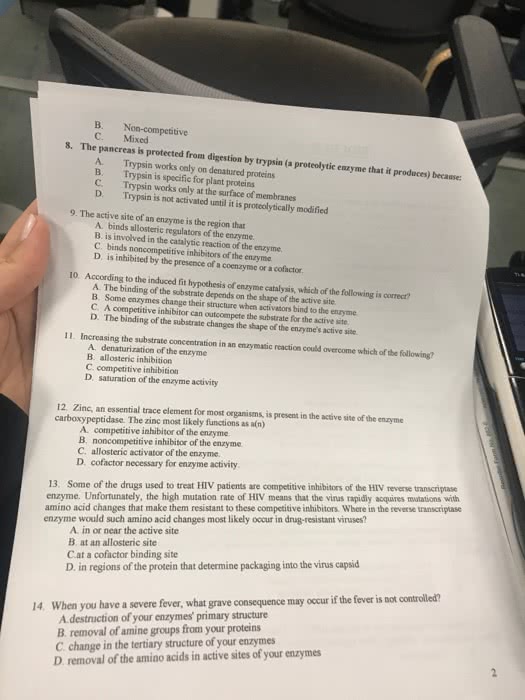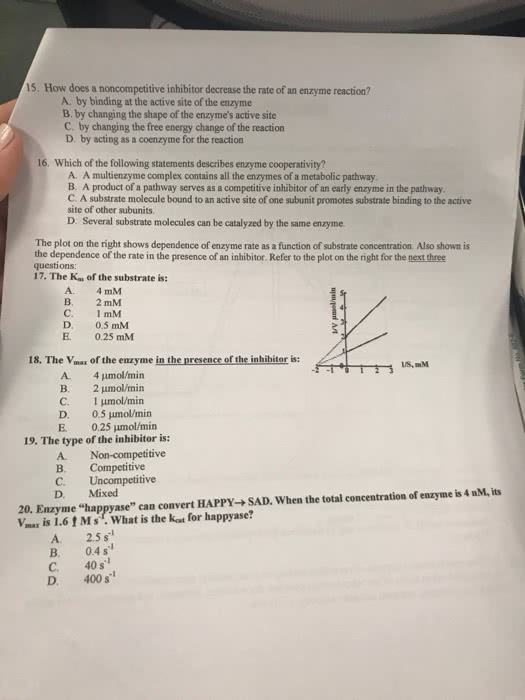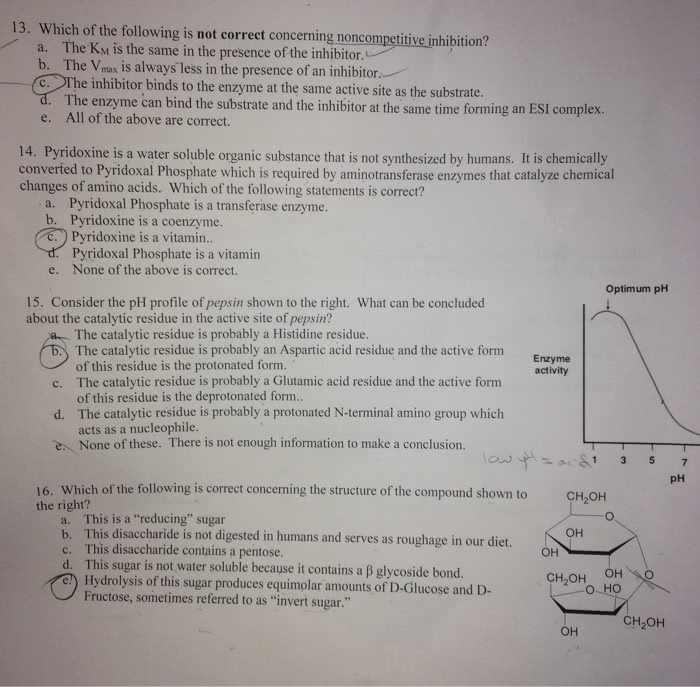CHE 211 Study Guide - Final Guide: Competitive Inhibition, Enzyme, Non-Competitive Inhibition

Organic Chemistry 2: Enzymes
Inhibition of Enzyme Activity
• Many kinds of molecules can cause enzymes to lose their catalytic activity these are
called enzymes inhibitors (although these can act differently, they ultimately all prevent
the active site from binding with the substrate); some cause irreversible inhibition,
where an inhibitor binds covalent with enzyme and cannot be removed this makes
causes the enzyme to lose its activity irreversible
• Some inhibitors cause a reversible inhibition, which means the enzyme regains its
activity when the inhibitor dissociates itself from the coenzyme
• Chemical can bind to enzymes and eliminate or drastically reduce catalytic activity
• There are 3 types of enzyme inhibitors
• Classify enzyme inhibitors on the basis of reversibility and competition
o Irreversible inhibitors bind tightly to the enzyme and thereby prevent formation
of the E-S complex
o Reversible competitive inhibitors often structurally resemble the substrate and
bind at the normal active site
o Reversible non-competitive inhibitors usually bind at someplace other than the
active site Binding is weak and thus, inhibition is reversible
Irreversible Inhibitors
➢ Irreversible enzyme inhibitors bind very tightly to the enzyme (bind tightly to the R-
groups of amino acids in the active site of the enzyme eliminates all enzyme activity)
o Binding of the inhibitor to one of the R-groups of an amino acid in the active site
o This binding may block the active site binding groups so that the enzyme-
substrate complex cannot form (most of the time, the chemical that binds to the
active of the enzyme is toxic that destroys the enzyme; insectisides and nerve
gases act as irreversible inhibitors of Acetylincholinerase (enzyme needed for
nerve conduction) when this enzyme is inhibited the transmission of nerve
impulses blocked, this results in paralysis
o Alternatively, an inhibitor may interfere with the catalytic group of the active
site, thus eliminating catalysis
o Other Irreversible inhibitors include:
- Arsenic
- Snake Venom
- Nerve Gas
Reversible, Competitive Inhibitors
• Reversible, competitive enzyme inhibitors are also called structural analogs
find more resources at oneclass.com
find more resources at oneclass.com
Document Summary
Reversible, competitive inhibitors: reversible, competitive enzyme inhibitors are also called structural analogs. Molecules that resemble the structure and charge distribution of a natural substrate for an enzyme competes for the active site of the enzyme. Resemblance permits the inhibitor to occupy the enzyme active site; the competitive inhibitor has a structure that is very similar to the substrate and competes with it for the active site. Once inhibitor is at the active site, no reaction can occur and the enzyme activity is inhibited; during this time, the substrate cannot bind to the enzyme and no reaction takes place. Inhibition is competitive because the inhibitor and the substrate compete for binding to the active site. Degree of inhibition depends on the relative concentrations of enzyme and inhibitor. As long as the concentration of the competitive inhibitor is substantial, there will be a loss of enzyme activity.



